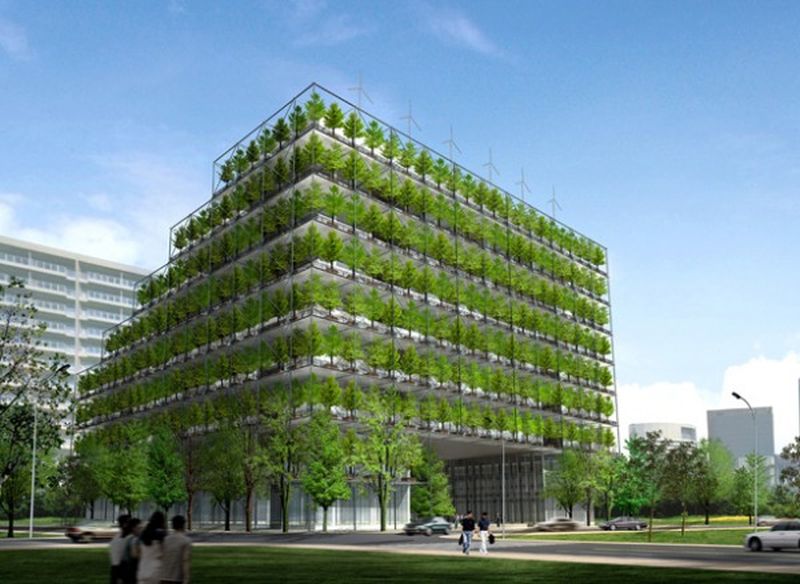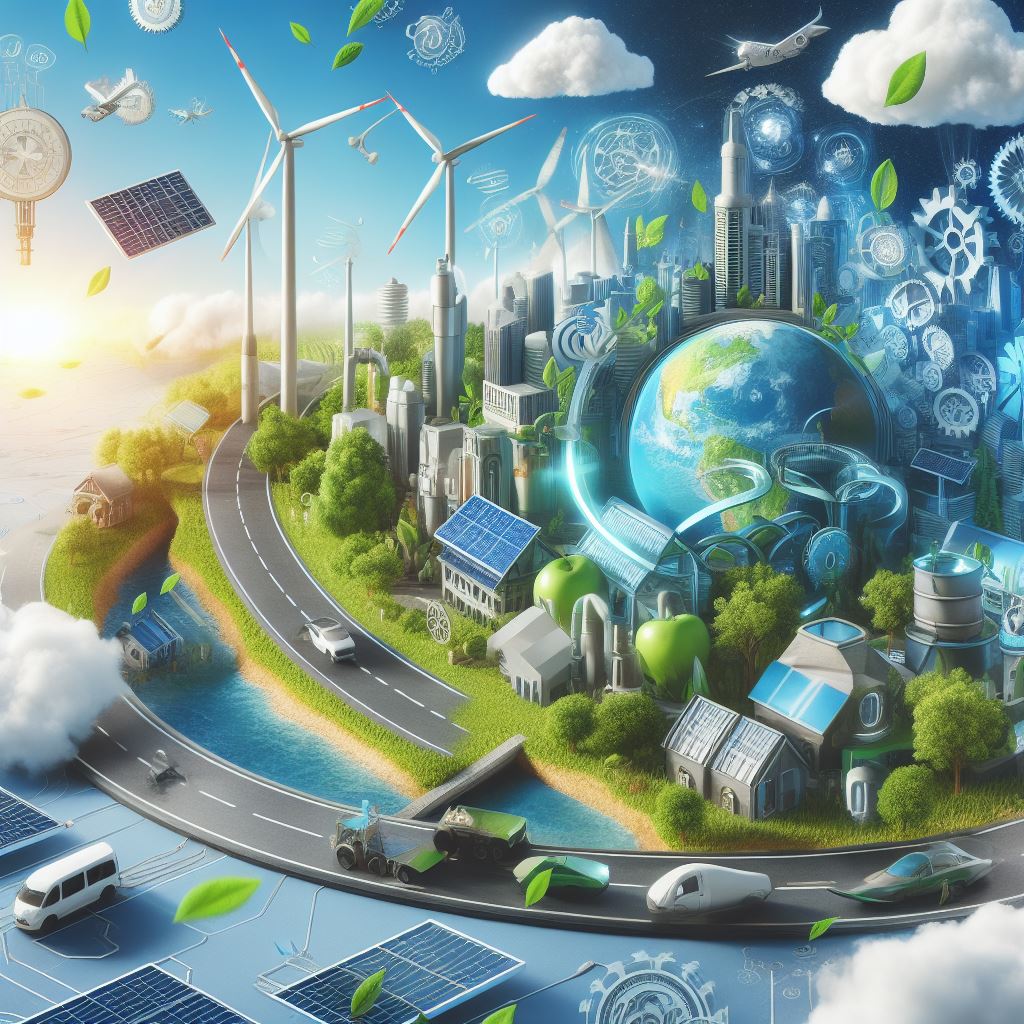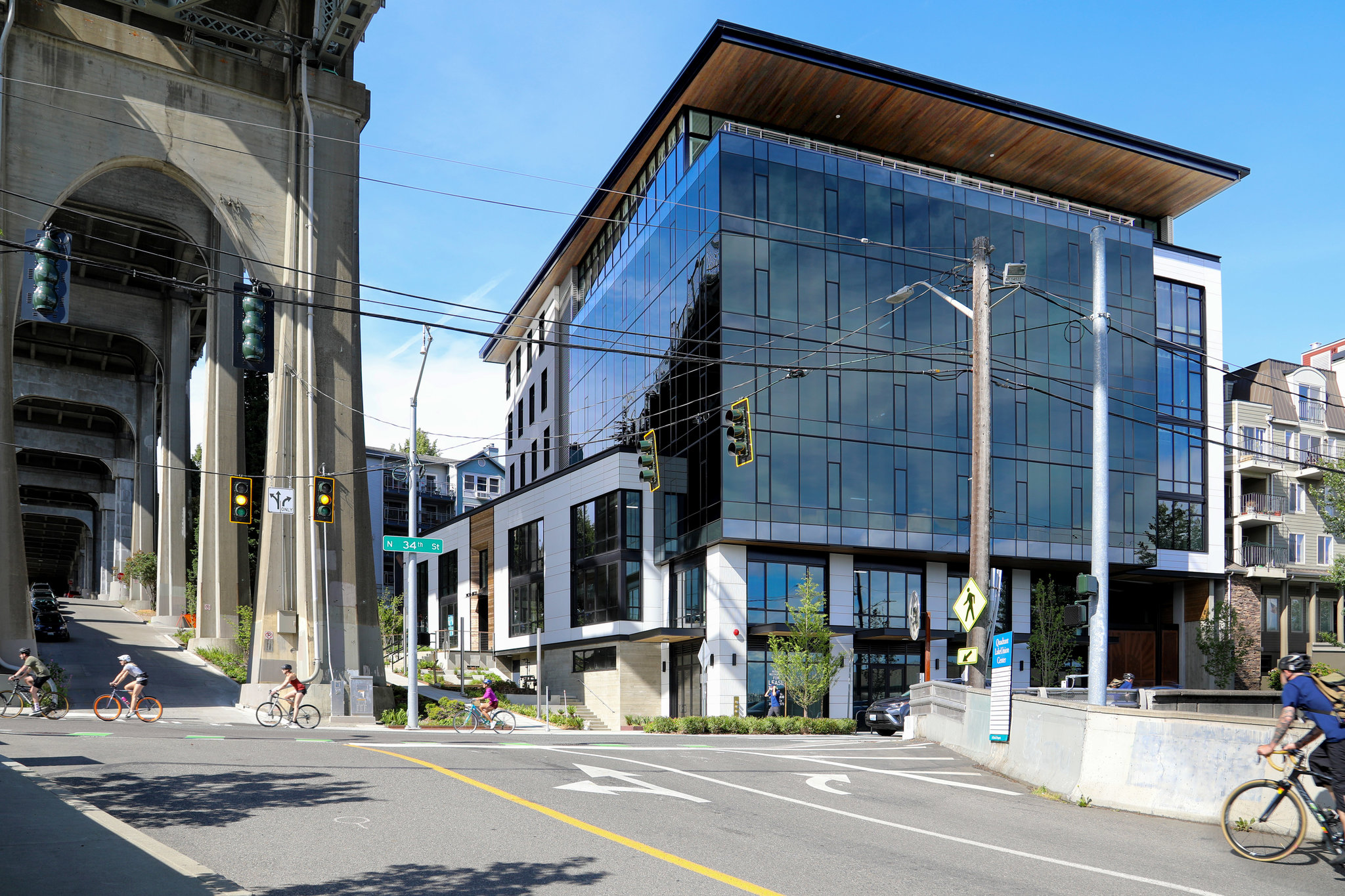How cities’ leadership can improve the quality of life for residents by fomenting top sustainable technologies to improve and transform education, health services, transportation, local renewable energy production, waste management, public safety, and many other sectors
Prof. Aécio D’Silva, Ph.D.
AquaUniversity
Sustainable Technology – Cities are the hubs of innovation, culture, and economy, but also the sources of many environmental and social challenges. As the world’s population and urbanization continue to grow, cities face increasing pressures to provide adequate and equitable services and opportunities for their residents, while reducing their ecological footprint and enhancing their resilience. To achieve this, cities need to embrace and adopt top sustainable technologies that can help them transform their reality and improve their quality of life.
Sustainable technologies are those that use resources efficiently, minimize waste and pollution, and promote social and environmentally sustainable development. They can help cities address some of the most pressing issues they face, such as lack of jobs, air quality, energy security, mobility, health, education, and safety. In this Collaborative Intelligence post, we will explore some of the top sustainable technologies that can help cities improve their quality of life and radically transform their reality, as well as some of the challenges and opportunities they present.
Top Sustainable Technologies for Cities
Sustainable technologies can be applied to various sectors and domains of urban life, such as education, health services, transportation, local renewable energy production, waste management, public safety, and many others. Here are some examples of top sustainable technologies for cities:
Smart City Technologies
Smart city technologies are those that use data and digital solutions to optimize city operations, services, and infrastructure, and to enhance citizen engagement and participation. Smart city technologies can help cities improve their efficiency, effectiveness, and accountability, as well as their innovation and creativity. [1]
Some examples of smart city technologies are:
- Smart grids: Smart grids are electricity networks that use digital technologies to monitor, control, and balance the supply and demand of electricity, and to integrate renewable energy sources, such as solar, green hydrogen, and wind power. Smart grids can help cities reduce their greenhouse gas emissions, increase their energy security and reliability, and lower their energy costs. [2]
- Smart water networks: Smart water networks are water distribution systems that use sensors, meters, and software to monitor, manage, and optimize water flow, pressure, quality, and consumption. Smart water networks can help cities reduce their water losses, improve their water quality and safety, and conserve their water resources. [3]
- Smart waste management: Smart waste management is the use of digital technologies to collect, sort, process, and recycle waste, and to generate energy or materials from waste. Smart waste management can help cities reduce their waste generation, landfilling, and incineration, and increase their resource recovery and circularity. [4]
- Smart mobility systems: Smart mobility systems are transportation systems that use digital technologies to improve the accessibility, efficiency, safety, and sustainability of urban mobility. Smart mobility systems can help cities reduce their traffic congestion, pollution, and accidents, and increase their public transport use, active mobility, and multimodality.
Green Technologies
Green technologies are those that use natural or renewable resources, or mimic natural processes, to provide environmental benefits or solutions. Green technologies can help cities improve their environmental quality, health, and well-being, as well as their biodiversity and ecosystem services. Some examples of green technologies are:
- Green buildings: Green buildings are buildings that use design, construction, and operation practices that minimize their environmental impact and enhance their human comfort and performance. Green buildings can help cities reduce their energy consumption, water use, and waste generation, and improve their indoor air quality, thermal comfort, and natural lighting.
- Green roofs and walls: Green roofs and walls are vegetated surfaces that cover roofs or walls of buildings or structures. Green roofs and walls can help cities reduce their urban heat island effect, stormwater runoff, and noise pollution, and improve their air quality, biodiversity, and aesthetics.
- Green spaces: Green spaces are areas of natural or semi-natural vegetation that provide recreational, aesthetic, or ecological functions in urban areas. Green spaces can help cities reduce their carbon emissions, improve their microclimate, and enhance their mental and physical health, social cohesion, and quality of life.
- Green infrastructure: Green infrastructure is a network of natural or semi-natural elements that provide multiple benefits for urban areas, such as water management, climate adaptation, biodiversity conservation, and human well-being. Green infrastructure can help cities increase their resilience, sustainability, and livability.
The Challenges and Opportunities of Sustainable Technologies for Cities
Sustainable technologies have the potential to transform the reality of cities and improve the quality of life of their residents, but they also pose some challenges and risks that need to be addressed and mitigated. Some of these challenges and risks are:
- The cost and complexity of implementing and maintaining sustainable technologies, especially for developing or low-income cities that lack the financial, technical, or institutional capacity to do so.
- The social and cultural acceptance and adoption of sustainable technologies, especially for those that require behavioral or lifestyle changes, or that may face resistance or opposition from some stakeholders or groups.
- The ethical and legal implications of sustainable technologies, especially for those that involve data collection, processing, or sharing, or that may affect the privacy, security, or rights of the users or the public.
- The unintended or negative consequences of sustainable technologies, especially for those that may have trade-offs, externalities, or rebound effects, or that may create new problems or challenges.
However, these challenges and risks also present opportunities and incentives for cities to overcome them and to leverage the benefits of sustainable technologies. Some of these opportunities and incentives are:
- The availability and accessibility of funding and financing mechanisms, such as grants, loans, subsidies, or public-private partnerships, that can help cities invest in and scale up sustainable technologies.
- The availability and accessibility of knowledge and best practices, such as guidelines, standards, or platforms, that can help cities learn from and collaborate with other cities or stakeholders that have successfully implemented or adopted sustainable technologies.
- The availability and accessibility of innovation and creativity, such as research, development, or experimentation, that can help cities develop or adapt sustainable technologies to their specific needs, preferences, or contexts.
- The availability and accessibility of participation and engagement, such as consultation, co-creation, or feedback, that can help cities involve and empower their residents or other stakeholders in the design, implementation, or evaluation of sustainable technologies. [2, 5]
How can cities finance sustainable technologies?
Sustainable technologies are those that use resources efficiently, minimize waste and pollution, and promote social and environmental justice. They can help cities address some of the most pressing issues they face, such as creating job opportunities, air quality, energy security, mobility, health, education, and safety. However, sustainable technologies also require significant investments and maintenance costs, which can be challenging for cities, especially for developing or low-income ones, that lack the financial, technical, or institutional capacity to do so.
To finance sustainable technologies, cities need to explore and adopt innovative and alternative funding and financing mechanisms, that can help them mobilize and leverage public and private resources and create new sources of revenue and value. Some of these mechanisms are: [6, 7]
- Grants, loans, and subsidies: These are traditional forms of funding and financing that can help cities access external funds from governments, multilateral institutions, or donors, to support the initial costs or risks of sustainable technologies. For example, the Financing Sustainable Cities Initiative
helps cities access grants, loans, and subsidies from various sources to implement low-carbon and climate-resilient projects. [8]
- Public-private partnerships: These are contractual arrangements between public and private entities, where the private entity provides a service or an asset to the public entity, in exchange for a payment or a share of the revenue or profit. Public-private partnerships can help cities leverage the expertise, efficiency, and innovation of the private sector, and share the costs and risks of sustainable technologies. For example, the G20 Global Smart Cities Alliance helps cities establish public-private partnerships for smart city technologies, such as smart grids, smart water networks, or smart waste management. [9]
- Value capture: This is a method of generating revenue from the increased value of land or property that results from public investments or interventions, such as infrastructure or urban development projects. Value capture can help cities recover some of the costs of sustainable technologies and create incentives for smart private development. For example, the Transmilenio Bus Rapid Transit system in Bogota, Colombia, used value capture to finance part of its construction and operation costs, by charging a betterment levy on the properties that benefited from the improved accessibility and mobility. [10]
- Carbon pricing and trading: This is a method of internalizing the environmental and social costs of carbon emissions, by imposing a fee or a tax on the emitters, or by creating a market where the emitters can buy and sell emission permits or credits. Carbon pricing and trading can help cities reduce their greenhouse gas emissions, and generate revenue or savings from sustainable technologies. For example, the Tokyo Cap-and-Trade Program is a mandatory scheme that requires large-scale facilities in Tokyo to reduce their carbon emissions, or to buy credits from other facilities or renewable energy projects, creating a market for low-carbon technologies.[6, 7]
What are some examples of public-private partnerships for sustainable technologies?
Public-private partnerships are contractual arrangements between public and private entities, where the private entity provides a service or an asset to the public entity, in exchange for a payment or a share of the revenue or profit. Public-private partnerships can help cities leverage the expertise, efficiency, and innovation of the private sector, and share the costs and risks of sustainable technologies. Some examples of public-private partnerships for sustainable technologies are:
- Bringing solar to public housing: The state of Massachusetts partnered with solar company SunEdison to make rooftop solar available to public housing through power purchase agreements. The program allows solar to be installed on-site or come from one of 10 projects strategically located in various parts of Massachusetts. The program can help reduce greenhouse gas emissions, increase energy security and reliability, and lower energy costs. [10]
- Keeping the Big Apple’s biggest public space green: The City of New York partnered with the Central Park Conservancy, a nonprofit organization, to restore, manage, and enhance Central Park. The Conservancy has invested more than $600 million toward maintaining and improving the park and raises about 75 percent of the park’s annual budget. The partnership can help improve the environmental quality, health, and well-being of the city and its residents. [5]
- Reimagining municipal waste: The City of Edmonton, Canada, partnered with Enerkem, a waste-to-biofuels company, to build and operate a facility that converts municipal solid waste into ethanol and methanol. The facility can process up to 100,000 metric tons of waste per year, and produce up to 38 million liters of biofuels. The partnership can help reduce waste generation, landfilling, and incineration, and increase resource recovery and circularity. [11]
- Fighting deforestation in the developing world: The World Bank partnered with the International Finance Corporation, a private sector arm of the World Bank Group, and the Forest Carbon Partnership Facility, a global partnership of governments, businesses, and civil society, to create the Forest Carbon Partnership Facility Carbon Fund. The fund provides results-based payments to developing countries that reduce emissions from deforestation and forest degradation. The fund can help conserve biodiversity, enhance ecosystem services, and support local livelihoods. [12]
- Helping developing nations brace for climate impacts: The Global Environment Facility, a multilateral trust fund, partnered with the International Union for Conservation of Nature, a global environmental organization, and Acclimatise, a climate change consultancy, to create the Ecosystem-based Adaptation in Mountain Ecosystems program. The program supports six developing countries in Africa, Asia, and Latin America to implement ecosystem-based adaptation projects that increase the resilience of vulnerable communities and ecosystems to climate change. The program can help improve water security, food security, and disaster risk reduction. [6]
These are some of the examples of public-private partnerships for sustainable technologies, but there are many more in different fields and domains. Public-private partnerships can be an effective tool for cities to mobilize and leverage public and private resources, and create new sources of revenue and value, for implementing and scaling up sustainable technologies. launch
In summary, Top Sustainable Technologies are those that use resources efficiently, minimize waste and pollution, and promote social and environmental justice. They can help cities address some of the most pressing issues they face, such as joblessness, air quality, energy security, mobility, health, education, and safety. Sustainable technologies can be applied to various sectors and domains of urban life, such as smart city technologies and green technologies. Sustainable technologies have the potential to transform the reality of cities and improve the quality of life of their residents, but they also pose some challenges and risks that need to be addressed and mitigated. However, these challenges and risks also present opportunities and incentives for cities to overcome them and to leverage the benefits of sustainable technologies. Sustainable technologies are the key to creating more livable, resilient, and inclusive cities for the present and the future.
References:
[1]: Smart city technology for a more liveable future | McKinsey. https://www.mckinsey.com/capabilities/operations/our-insights/smart-cities-digital-solutions-for-a-more-livable-future
[2]: Smart Grids – IEA. https://www.siemens-advanta.com/blog/green-technology
[3]: Smart Water Networks: How Data and Analytics Can Help the Water … https://leadersinternational.org/sme4smartcities-insights/green-technologies-transforming-smart-cities-for-the-future/
[4]: Smart Waste Management: A Sustainable Solution for Cities. https://www.forbes.com/sites/forbestechcouncil/2024/01/09/five-sustainability-technologies-to-anticipate-in-2024/
[5]: public-private partnerships pushing the sustainability envelope | GreenBiz. [1https://www.greenbiz.com/article/5-public-private-partnerships-pushing-sustainability-envelope
[6]: The role of public–private–philanthropic partnerships | McKinsey. https://www.mckinsey.com/capabilities/sustainability/our-insights/the-role-of-public-private-philanthropic-partnerships-in-driving-climate-and-nature-transitions
[7]: The Role of Public-private Partnerships in Sustainable Infrastructure … https://utilitiesone.com/the-role-of-public-private-partnerships-in-sustainable-infrastructure-energy
[8]: Strategic Public Private Partnerships – OECD iLibrary. [4https://www.oecd-ilibrary.org/strategic-public-private-partnerships_5jllhb0d5wmx.pdf








